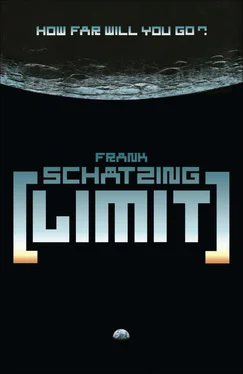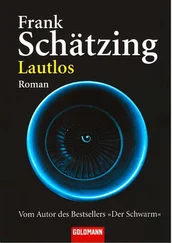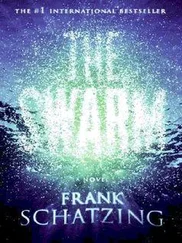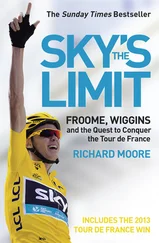* * *
‘What about the chickens?’ asked Mukesh Nair.
‘A crackpot idea,’ Julian objected. ‘There are four left. Two are even still laying eggs, little spherical things with the nutritional value of golf balls. The pelvic muscles of the others have regressed so far that they can’t push anything out.’
‘So much for births in space,’ said Eva Borelius. ‘Push, push! But what with?’
‘And what about the chicken poo?’ Karla Kramp seemed weirdly fascinated by the subject.
‘Oh, they crap more than we’d like them to,’ said Julian. ‘We tried to siphon it off, but you have to be careful that you don’t suck the feathers off the poor creatures’ butts. The whole thing’s pretty tricky. Quite honestly, I don’t know how to raise chickens in zero gravity. They don’t like it. They’re always bumping into each other, you have to put them on leashes, they look baffled. Unlike fish, by the way! They don’t seem to care, they live in a kind of floating state anyway. We could look into fish-breeding next, if you like.’
‘We haven’t tried everything yet,’ announced Kay Woodthorpe, a squat woman with the face of a Chihuahua, who worked for the bioregenerative systems research group. ‘If the worst comes to the worst, we’ll try artificial gravity.’
‘How would you do that?’ asked Carl Hanna. ‘By making the OSS rotate?’
‘No,’ Julian shook his head. ‘Just the breeding module, uncoupled and stored a few kilometres away. A structure like OSS isn’t suited to spinning. You’d need a wheel for that.’
‘Like in science fiction movies?’
‘Exactly.’
‘But you’ve got one here,’ said Tautou. ‘Not a wheel, perhaps, but axial symmetric elements—’
‘You’re talking about a Bernal sphere, my friend. That’s something else. A wheel whose rotational element corresponds to the speed of the Earth’s rotation.’ Julian frowned. ‘Imagine a car tyre or a cylindrical body. When it turns, centrifugal forces arise at the internal wall, opposite the axis. Then something like gravity comes into being. You can walk along a self-enclosed surface, excellent jogging route, by the way, while the gravity decreases towards the axis. Feasible in principle. The problem is the requisite size and stability of such a structure. A wheel with a diameter of – let’s say – a hundred metres would have to complete a rotation every fourteen seconds, and the gravity at your feet would probably be stronger than the gravity at your head, because your body accelerates to different degrees. And besides, if you set something like that in motion— You know that from driving: when one of your tyres isn’t properly balanced, it lurches like mad; and now imagine a rotating station starting to careen. You’ve got people walking about, how are you going to ensure that they’re evenly distributed at all times? You couldn’t begin to calculate the vibrations produced, everyone would be nauseous, the thing might explode—’
‘But you’ve left the era of lightweight construction behind,’ said Hanna. ‘With the lift you can put unlimited mass in orbit. Just build a bigger, more stable one.’
‘Would such a thing be possible?’ Tautou said in amazement. ‘Like the one in 2001 ?’
‘Sure.’ Julian nodded. ‘I knew Kubrick. The old guy had thought very carefully about that, or let’s say he’d had other people think about it for him. I’ve always dreamed of copying his space station. That massive wheel turning to the sounds of waltz-music, which you can walk around. But it would have to be huge. Four kilometres in diameter. High orbit, highly armoured. So you could fit a whole city inside, with residential areas, parks, maybe a river—’
‘I think this is quite fascinating enough,’ Sushma Nair said to her husband and, glowing with enthusiasm, touched his arm. ‘Look at that, Mukesh. Spinach. Courgettes!’
They were floating along a glass wall several metres high. Behind it all kinds of greenery curled and sprouted, fruits dangled from trees.
‘Pioneering work, Julian,’ Mukesh agreed. ‘You’ve managed to impress a simple peasant.’
‘Just as you have impressed the world.’ Julian smiled.
False modesty, Nair, thought Hanna.
While a brave little group explored the vacuum outside, he, Eva Borelius, Karla Kramp, Bernard Tautou and the Nairs were, under the expert guidance of Julian and Kay Woodthorpe, viewing the two biospheres, the huge, spherical modules in which the bioregenerative life-support system department was experimenting with agriculture and animal-rearing. Over six floors, Biosphere A brought together courgettes and cabbage, spinach, tomatoes, paprika and broccoli, a real Little Italy of vegetables, as well as kiwi-fruit and strawberries, the whole thing populated by a fauna of bustling robots, constantly planting, fertilising, hoeing, cutting and harvesting. Hanna wouldn’t have been surprised to see carbon-fibre-reinforced rabbits with radio-telescope ears gnawing at the lettuce and suddenly floating away at their approach. He threw back his head. One level up, apple-trees stretched knotty branches resplendent with cudgel-hard fruits.
At first, Woodthorpe told them, there had been massive problems. The predecessors of the greenhouses, called salad-machines, had been little more than standard racks in which tomatoes and lettuce flourished in competition. As plants took their bearings from gravity like almost all living creatures, and thus knew where to stretch and in which direction to send their roots, the loss of up and down had led to the formation of terrible thickets – unfortunately at the expense of the fruits, which led a wretched guerrilla lifestyle in the middle of the kraken-like root-monster. Thrown into confusion, even spinach had produced only woody stalks in a desperate bid to cling onto something, until it occurred to someone to subject the fields to artificial tremors, brief shakes as a result of which their fruit and vegetable plants finally sought support down below, where the vibrations came from.
‘Since then we’ve had the rank growth under control, and you can see the quality,’ Woodthorpe explained. ‘Certainly, it is and will always be greenhouse produce. The strawberries taste a bit watery, you wouldn’t necessarily win any prizes with the red peppers—’
‘But the courgettes are great,’ said Julian.
‘Yeah, and so’s the broccoli and amazingly the tomatoes too. We don’t really know yet why one works better than the other. At any rate the greenhouses give us cause to hope that we may in future be able to close life-support systems that are presently open. On the Moon we’ve nearly got there.’
‘What do you mean “close”?’ asked Karla.
‘Just like on Earth. Nothing gets lost there. The Earth is a self-enclosed system, everything is constantly being processed. Just look on the space station as a small copy of our planet with proportionately limited resources of water, air and fuel, except that in the past we couldn’t rework all those resources. We were constantly forced to maintain supplies. Carbon dioxide, for example, got completely out of hand. Today we can split it in reactors, use the liberated oxygen again to breathe, or combine it with hydrogen to form water, and the remaining carbon can be synthesised with methane to form fuel. Just a bit of sludge gets lost in the process, and it’s hardly worth mentioning. The problem is more one of bringing the size and consumption of the reactors into a convincing relationship with their effectiveness. So we try to do that with natural regeneration processes. Plants can also serve that purpose. Our own little rainforest, if you like. On the Moon we have bigger greenhouses, and we’re on the brink of completely closing all the cycles.’
Читать дальше












